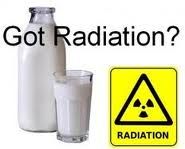Milk from Little Rock and drinking water from Philadelphia contained the highest levels of Iodine-131 from Japan yet detected by the Environmental Protection Agency, according to data released by EPA Saturday.
The Philadelphia sample is below the EPA's maximum contaminant level (MCL) for iodine-131, but the Little Rock sample is almost three times higher.
Nonetheless, the EPA does not consider the milk dangerous because the MCL is set for long-term exposure, and the iodine-131 from Japan's Fukushima-Daichi nuclear accident is expected to be temporary and deteriorate rapidly.
The EPA's MCL for iodine-131 is 3 picoCuries per liter.
The Little Rock milk sample contained 8.9 picoCuries per liter. It was collected on March 30.
Three drinking water samples collected in Philadelphia on April 4 contained Iodine-131, according to Saturday's data release:
- A sample from the city's Queen Lane Treatment Plant showed 2.2 picoCuries per liter - the highest concentration in EPA's drinking water data so far.
- Water collected at the Belmont Treatment Plant contained 1.3 picocuries, and
- Water collected at the Baxter Treatment Plant contained 0.46 picocuries.
Iodine-131 has a half life of eight days: every eight days, half of its mass decays into a non-radioactive isotope of xenon.
There is much more detailed information about this weekend's data releases from EPA in the previous post: Radiation Detected In Drinking Water In 13 More US Cities."




It's RADIATION not a little dirt! There is NO safe radiation and the cancer, mutations and deaths beginning in about 5 years will prove it! The government agencies responsible for the misinformation we are getting think us all mindless drones. Don't believe them! Take all precautions!